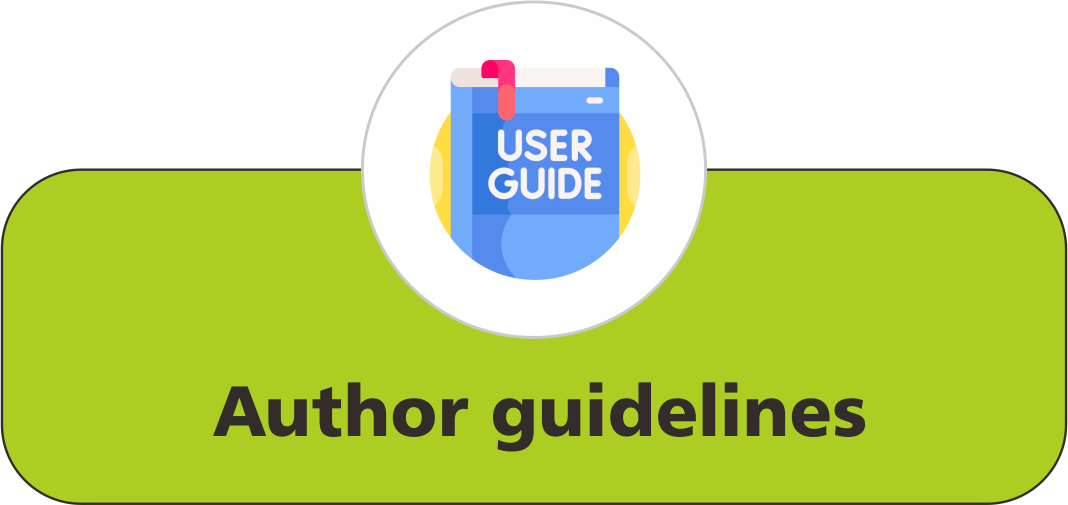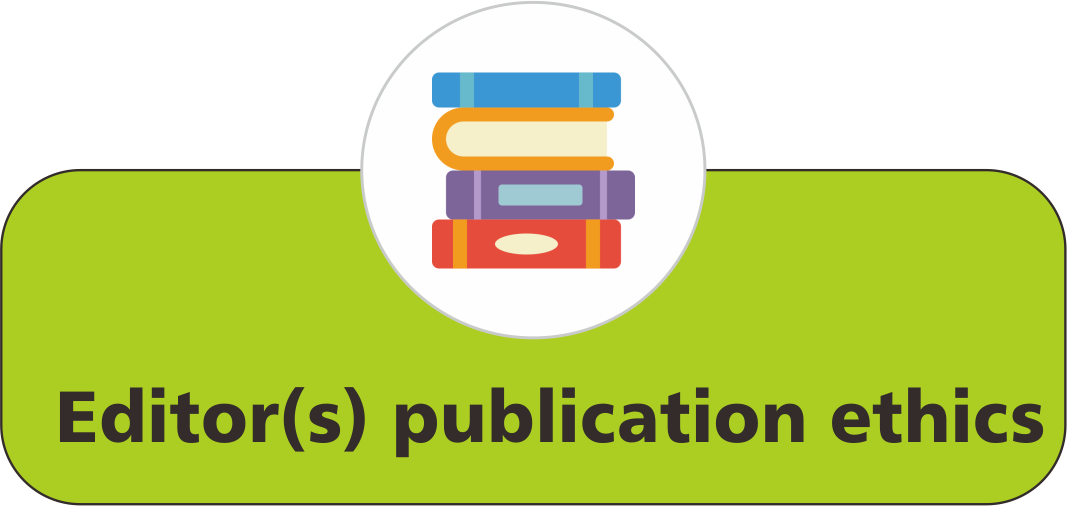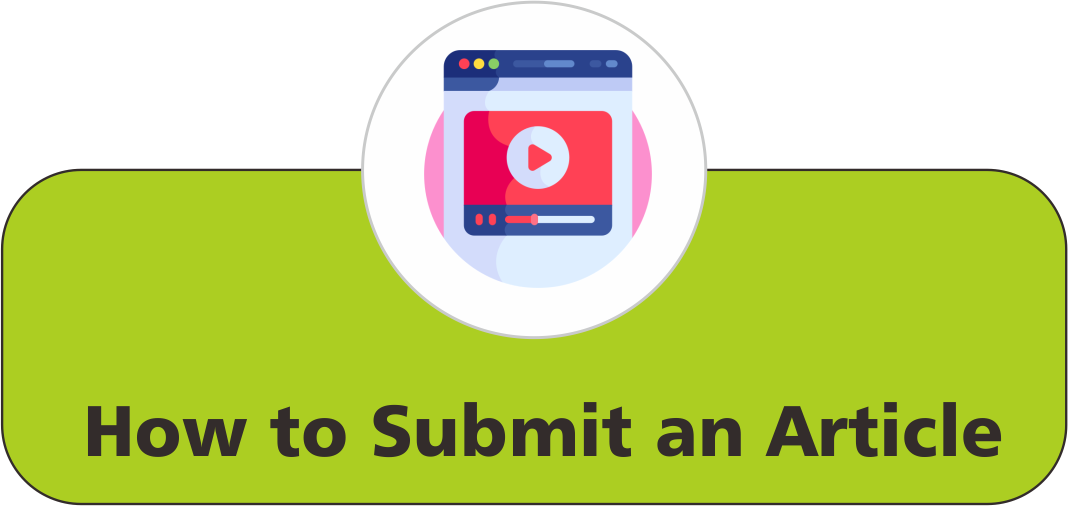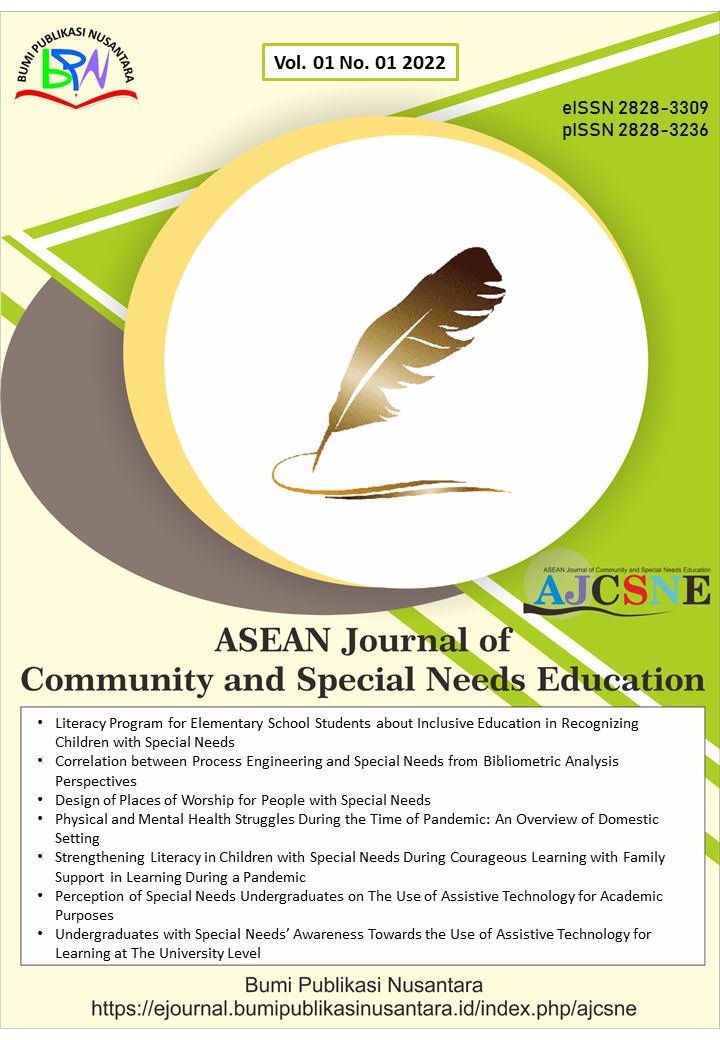Efforts to Improve the Vocabulary of Indonesian Language for 1st-Grade Elementary Students with Hearing Impairment for Through the Application of Mnemonic
 ),
),
(1) Sekolah Luar Biasa Negeri Bekasi Jaya
 Corresponding Author
Corresponding Author
Abstract
Keywords
References
Kadarusman, G., and Cahyono, B. E. H. (2018). PUse of magic tree learning media with make a match learning model to improve indonesian vocabulary mastery for class ii students with hearing impairment SDLB Dharma Wanita Jiwan Kabupaten Madiun. Linguista: Jurnal Ilmiah Bahasa, Sastra, dan Pembelajarannya, 2(1), 61-71.
Mumpuni, A., and Supriyanto, A. (2020). PDevelopment of domino cards as vocabulary learning media for grade v elementary school students. Elementary School: Study of Educational Theory and Practice, 29(1), 88-101.
Nehrulita, H. (2015). Total Physical Response (TPR) method for understanding the vocabulary of children with hearing impairment in the preparatory class at TKLB-B. Jurnal Pendidikan Khusus, 7(2), 1-8.
Purnamasari, R. (2018). Mnemonic learning strategies to improve students' memory. SIPATAHOENAN, 4(2). 125-138.
Sari, M. U. K., Kasiyun, S., Ghufron, S., and Sunanto, S. (2021). Efforts to improve indonesian vocabulary mastery by using anagram games in elementary schools. Jurnal Basicedu, 5(5), 3614-3624.
Serani, G., and Heni, L. (2020). Improving indonesian vocabulary mastery using picture media for grade 1 students Sekolah Dasar Negeri 43 Tapang Aceh Tahun Ajaran 2019/2020. Jurnal Kansasi, 5(1), 71-80.
Sugiarti, S. (2016). Efforts to increase the vocabulary of children with Hearing Impairment through the media of image variations in class V/B students in Indonesia SLB Negeri Surakarta. Prosiding Ilmu Pendidikan, 1(2).
Suyana, N. (2017). Increasing vocabulary mastery of middle school students through the use of vocabulary list media. UTILITY: Jurnal Ilmiah Pendidikan dan Ekonomi, 1(1), 86-93.
Article Metrics
Abstract View : 1335 times
: 1335 times Download : 683 times
Download : 683 times
Refbacks
- There are currently no refbacks.
Copyright (c) 2022 Bumi Publikasi Nusantara

This work is licensed under a Creative Commons Attribution-ShareAlike 4.0 International License.







